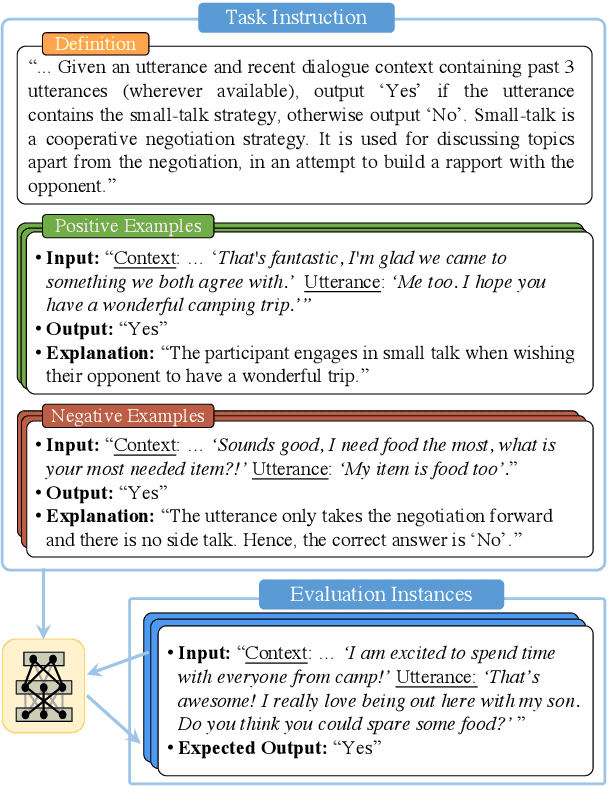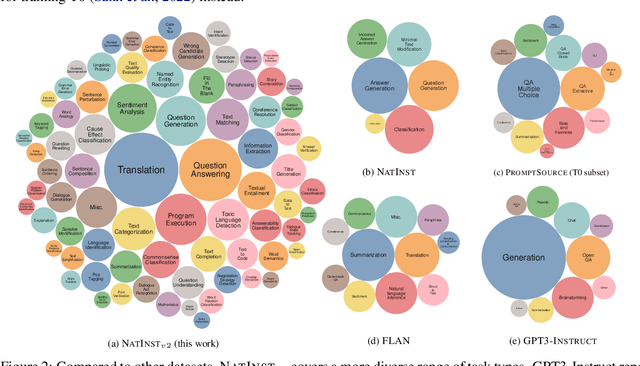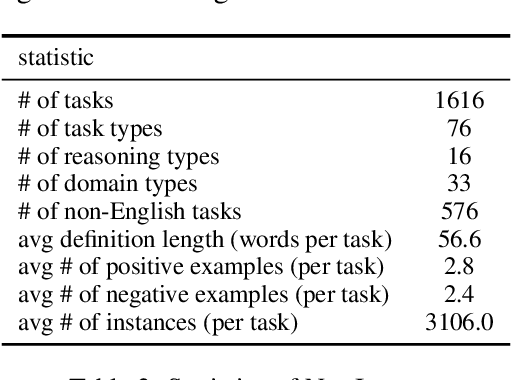Pegah Alipoormolabashi
Shammie
Beyond the Imitation Game: Quantifying and extrapolating the capabilities of language models
Jun 10, 2022Abstract:Language models demonstrate both quantitative improvement and new qualitative capabilities with increasing scale. Despite their potentially transformative impact, these new capabilities are as yet poorly characterized. In order to inform future research, prepare for disruptive new model capabilities, and ameliorate socially harmful effects, it is vital that we understand the present and near-future capabilities and limitations of language models. To address this challenge, we introduce the Beyond the Imitation Game benchmark (BIG-bench). BIG-bench currently consists of 204 tasks, contributed by 442 authors across 132 institutions. Task topics are diverse, drawing problems from linguistics, childhood development, math, common-sense reasoning, biology, physics, social bias, software development, and beyond. BIG-bench focuses on tasks that are believed to be beyond the capabilities of current language models. We evaluate the behavior of OpenAI's GPT models, Google-internal dense transformer architectures, and Switch-style sparse transformers on BIG-bench, across model sizes spanning millions to hundreds of billions of parameters. In addition, a team of human expert raters performed all tasks in order to provide a strong baseline. Findings include: model performance and calibration both improve with scale, but are poor in absolute terms (and when compared with rater performance); performance is remarkably similar across model classes, though with benefits from sparsity; tasks that improve gradually and predictably commonly involve a large knowledge or memorization component, whereas tasks that exhibit "breakthrough" behavior at a critical scale often involve multiple steps or components, or brittle metrics; social bias typically increases with scale in settings with ambiguous context, but this can be improved with prompting.
Benchmarking Generalization via In-Context Instructions on 1,600+ Language Tasks
Apr 16, 2022



Abstract:How can we measure the generalization of models to a variety of unseen tasks when provided with their language instructions? To facilitate progress in this goal, we introduce Natural-Instructions v2, a collection of 1,600+ diverse language tasks and their expert written instructions. More importantly, the benchmark covers 70+ distinct task types, such as tagging, in-filling, and rewriting. This benchmark is collected with contributions of NLP practitioners in the community and through an iterative peer review process to ensure their quality. This benchmark enables large-scale evaluation of cross-task generalization of the models -- training on a subset of tasks and evaluating on the remaining unseen ones. For instance, we are able to rigorously quantify generalization as a function of various scaling parameters, such as the number of observed tasks, the number of instances, and model sizes. As a by-product of these experiments. we introduce Tk-Instruct, an encoder-decoder Transformer that is trained to follow a variety of in-context instructions (plain language task definitions or k-shot examples) which outperforms existing larger models on our benchmark. We hope this benchmark facilitates future progress toward more general-purpose language understanding models.
Understanding Procedural Knowledge by Sequencing Multimodal Instructional Manuals
Oct 16, 2021



Abstract:The ability to sequence unordered events is an essential skill to comprehend and reason about real world task procedures, which often requires thorough understanding of temporal common sense and multimodal information, as these procedures are often communicated through a combination of texts and images. Such capability is essential for applications such as sequential task planning and multi-source instruction summarization. While humans are capable of reasoning about and sequencing unordered multimodal procedural instructions, whether current machine learning models have such essential capability is still an open question. In this work, we benchmark models' capability of reasoning over and sequencing unordered multimodal instructions by curating datasets from popular online instructional manuals and collecting comprehensive human annotations. We find models not only perform significantly worse than humans but also seem incapable of efficiently utilizing the multimodal information. To improve machines' performance on multimodal event sequencing, we propose sequentiality-aware pretraining techniques that exploit the sequential alignment properties of both texts and images, resulting in > 5% significant improvements.
COM2SENSE: A Commonsense Reasoning Benchmark with Complementary Sentences
Jun 02, 2021Abstract:Commonsense reasoning is intuitive for humans but has been a long-term challenge for artificial intelligence (AI). Recent advancements in pretrained language models have shown promising results on several commonsense benchmark datasets. However, the reliability and comprehensiveness of these benchmarks towards assessing model's commonsense reasoning ability remains unclear. To this end, we introduce a new commonsense reasoning benchmark dataset comprising natural language true/false statements, with each sample paired with its complementary counterpart, resulting in 4k sentence pairs. We propose a pairwise accuracy metric to reliably measure an agent's ability to perform commonsense reasoning over a given situation. The dataset is crowdsourced and enhanced with an adversarial model-in-the-loop setup to incentivize challenging samples. To facilitate a systematic analysis of commonsense capabilities, we design our dataset along the dimensions of knowledge domains, reasoning scenarios and numeracy. Experimental results demonstrate that our strongest baseline (UnifiedQA-3B), after fine-tuning, achieves ~71% standard accuracy and ~51% pairwise accuracy, well below human performance (~95% for both metrics). The dataset is available at https://github.com/PlusLabNLP/Com2Sense.
 Add to Chrome
Add to Chrome Add to Firefox
Add to Firefox Add to Edge
Add to Edge